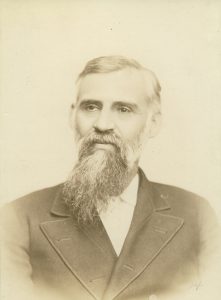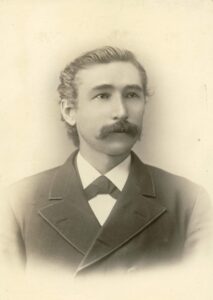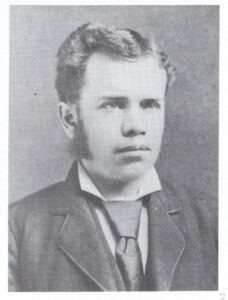Back to 1888 General Conference
Personalities and Issues of Conflict
George Ide Butler
General Conference President
Born 1834 – Died 1918
(Age 54 in 1888)
- At the age of 9, Butler faced the “Great Disappointment” with his family and others who believed Christ would come for His people in 1844.
- As a young man, Butler leaned towards infidelity but was converted at the age of 22 through the efforts of J. N. Andrews and he soon threw himself wholeheartedly into the work of the church.
- After serving as the Iowa Conference President, Butler served as President of the General Conference from 1871 to 1874.
- He was actively involved in raising funds for the first Seventh-day Adventist college at Battle Creek, MI, and he was instrumental in establishing Pacific Press in Oakland, CA.
- Butler served a second time as General Conference President from 1880 to 1888.
Uriah Smith
Editor of Review and Herald
Born 1832 – Died 1903
(Age 56 in 1888)
- At the age of 12, Smith faced the “Great Disappointment” with his family who believed Christ would return in 1844.
- Also at about age 12, he lost his left leg due to infection resulting in amputation about the knee – in later life he invented and patented an artificial leg with flexible joints.
- In 1852 he became a Sabbath keeping Adventist and soon joined the Whites in Rochester, NY – even though well educated, he refused a good teaching job to do publishing work, often hand trimming tracts with a pocket knife.
- When the Review offices moved to Battle Creek in 1855, he also moved and became the Editor of the Review and Herald at the age of 23 – he worked on the editorial staff for over 50 years.
- He was a prolific writer and wrote many hymns.
- He was the first Secretary of the General Conference and later became the Treasurer.
- He taught Bible at Battle Creek College and eventually authored the well-known book, Thoughts on Daniel and Revelation.
- For all of his many talents, though, Smith had faults like all others and when he received reproofs from Mrs. White about the college, he questioned the validity of her “opinions.”
Alonzo T. Jones
Co-Editor of Signs of the Times
Editor of American Sentinel
Born 1850 – Died 1923
(Age 38 in 1888)
- When Jones was 20 years old, he joined the U. S. Army – serving until 1873 and achieving the rank of Sergeant.
- An avid history reader, he applied his knowledge of history to the Bible, eventually writing 4 large volumes on prophecy.
- Upon discharge from the U. S. Army, Jones became a Seventh-day Adventist and started preaching in California.
- His talent in writing led him to become Editor of the Signs of the Times and American Sentinel (later called Liberty magazine).
- In 1897 he was voted into the General Conference Committee, serving 2 years.
- In 1897 he also became the Review and Herald Editor with Uriah Smith serving as his Associate Editor.
- One of his greatest endeavors was to preserve liberty of conscience as is guaranteed under the First Ammendment – his testimonies before congress repeatedly helped to defeat legislation that would have restricted religious freedoms.
- In 1901-1903 he was the California Conference President.
- One of his most noted works, though, was that of presenting the message of righteousness by faith – after the 1888 General Conference, he and Waggoner traveled extensively to share this message.
Ellet J. Waggoner
Co-Editor of Signs of the Times
Editor of American Sentinel
Born 1855 – Died 1916
(Age 33 in 1888)
- Waggoner’s father, Joseph, became an Advent believer in 1852, becoming a leading teacher and writer and serving on the committee that chose the name “Seventh-day Adventist.”
- Ellet attended Battle Creek College and later graduated from Bellevue Medical College as a physician.
- He served for a time on the Battle Creek Sanitarium staff and later served as manager at St. Helena Hospital in California.
- In 1882, he experienced a most extraordinary conversion, sensing the abundant divine love for his personal salvation.
- In 1883, he left medicine to become Assistant Editor of Signs of the Times, joining his father who was Editor. Three years later he became Co-Editor with Alonzo T. Jones.
- His most notable work was that of presenting the message of righteousness by faith at the 1888 General Conference. His sermon series was published as a book “Christ and His Righteousness” and he, with Jones, later traveled extensively, sharing this message.
- In 1892, Waggoner became Editor of Present Truth while living in England where he continued his preaching and writing.
- He later worked at Emmanuel Missionary College and again at the Battle Creek Sanitarium.



